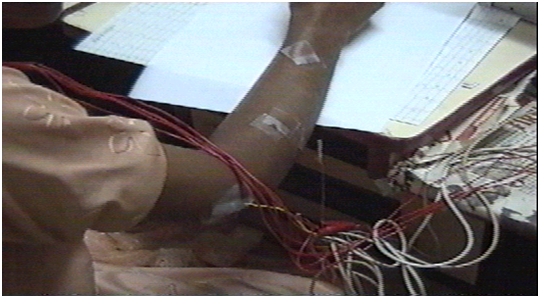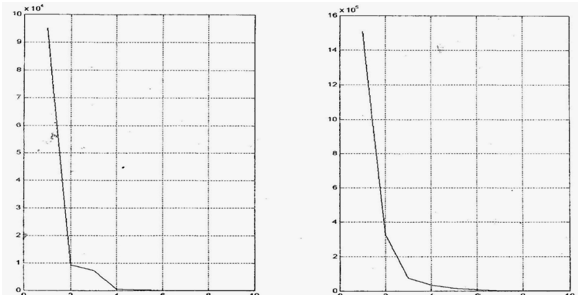Session Information
Date: Tuesday, June 6, 2017
Session Title: Pathophysiology (Other Movement Disorders)
Session Time: 1:45pm-3:15pm
Location: Exhibit Hall C
Objective: To quantify difference in WC patients with Concordant mirror movements(MMs) from those with Discordant MMs.
Background: Invasive methods are encouragive for quantitative analysis. The most established scale for assessing WC is WC rating scale (WCRS,Wissel.J,1996) which is subjective. Quantitative analysis is used for objective reason.
Methods: 12patients(M:F=11:1) with WC included in the study(mean age38.5±3Yrs, disease duration104±126.3months were studied). They were asked to write with right hand(RH) for 4 minutes with left for4minutes. During latter phase, they were inquired to maintain RH resting on table flexed on elbow in a semi pronated position, wrist in a neutral position, with fingers being kept relaxed in a semi flexed position. RH was observed for MMs while writing with LH. WC signals recorded,videotaping was done. A close up of signal recording shown(Fig1). PCA,canonical correlation analysis between RH writing signal(RHWS), LH writing signals(LHWS) for each patient was carried out.
Results: Data are centered, dispersion matrix computed for each of these matrices. Eigen vectors give the weightages to be given for 10means/SDs as the case may be, to construct 10scores as combinations of 10means/SDs for each patient. These scores are such that they have variability’s in decreasing order and uncorrelated. The variances/10000 for the case of means(Fig2) are(PC1:9.5056,PC2:0.9306 .0000 out of a total of11.215). Canonical variates defined for 2sets of variates observed on same “individuals” are pairs of linear combinations of the two sets, which are correlated maximally with each other, but uncorrelated with other such sets. No significant patterns could be discerned on comparing coherence patterns in C, D groups. In D group both LHWS RHWS showed significant coherence in ECR, 5thmuscle comparison 3/4 patients. This was seen in 6/8, 4/8 patients in C group(Table1)
Conclusions: This study showed significant quantifiable differences in the signals seen while writing with R and L hands between those WC patients with concordant MMs (C group) versus those with discordant MMs (D group). Analyses showed significant findings which led to attempts at more sophisticated analyses using multivariate techniques leading to effective data summarization, measures of dissimilarity between patients as reflected in the signals recorded and consequent possible clustering among them.
References:
- Wissel J, Kabus C, Wenzel R, Klepsch S, Schwarz U, Nebe A, Schelosky L, Scholz U, Poewe W, Botulinum toxin in writer’s cramp: objective response evaluation in 31 patients.J Neurol Neurosurg Psychiatry 1996 61: 172-175
- Carlo Codivari, Andrew J. Lees, V. Peter Misra, and Peter Brown, “EMG-EMG Coherence in Writer’s Cramp”, Journal of Movement Disorders, Vol. 17, No.5, 2002, Pp: 1011-1016.
To cite this abstract in AMA style:
V. Rama raju, R. Borgohain. Multivariate analysis of writer`s cramp: a study with advanced multi-channel microelectrode recording system [abstract]. Mov Disord. 2017; 32 (suppl 2). https://www.mdsabstracts.org/abstract/multivariate-analysis-of-writers-cramp-a-study-with-advanced-multi-channel-microelectrode-recording-system/. Accessed December 14, 2025.« Back to 2017 International Congress
MDS Abstracts - https://www.mdsabstracts.org/abstract/multivariate-analysis-of-writers-cramp-a-study-with-advanced-multi-channel-microelectrode-recording-system/



